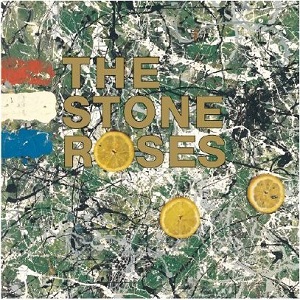
The Stone Roses is the debut studio album by English rock band the Stone Roses. It was recorded mostly at Battery Studios in London with producer John Leckie from June 1988 to February 1989 and released later that year on 2 May by Silvertone Records.
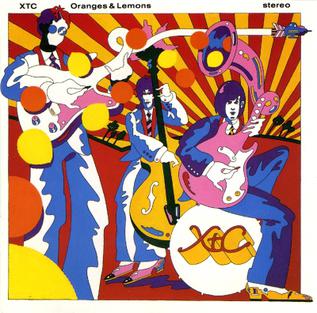
Oranges & Lemons is the 11th studio album and the second double album by the English band XTC, released 27 February 1989 on Virgin Records. It is the follow-up to 1986's Skylarking. The title was chosen in reference to the band's poor financial standing at the time, while the music is characterised as a 1980s update of 1960s psychedelia. It received critical acclaim and became the band's highest-charting album since 1982's English Settlement, rising to number 28 in the UK and number 44 in the US.

Songs in the Key of X: Music from and Inspired by the X-Files is a 1996 compilation album released in association with the American science fiction television series The X-Files. The album contained a mixture of songs that were either featured in the series, or shared thematic elements with it. Songs in the Key of X peaked at No. 47 on the Billboard 200 album sales chart after its release. The album's title is a play on the title of Stevie Wonder's 1976 album Songs in the Key of Life.

The Black Album is the fourth studio album by English punk rock band the Damned, and the first to feature Paul Gray on bass guitar. It was released on 3 November 1980 by Chiswick as a double album, with "Curtain Call" filling the whole of side 3, and a selection of live tracks recorded at Shepperton Studios at a special concert for Damned fan club members on side 4. The song "13th Floor Vendetta" paid tribute to the film The Abominable Dr. Phibes (1971), opening with the lyrics "...the organ plays to midnight on Maldine Square tonight".

"Some Might Say" is a song by the English rock band Oasis. It was released as the first single on 24 April 1995 by Creation from their second studio album, (What's the Story) Morning Glory? (1995). The song was written by the band's lead guitarist Noel Gallagher. "Some Might Say" provided Oasis with their first number one on the UK Singles Chart and reached the top 10 in Finland, Iceland, Ireland and Sweden. The song is also the last to feature all five original members, as the drummer Tony McCarroll was fired shortly after the song's release.
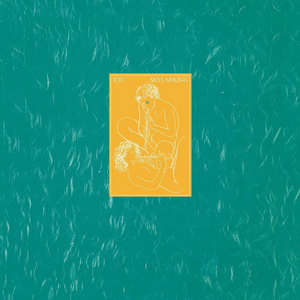
Skylarking is the ninth studio album by the English rock band XTC, released 27 October 1986 on Virgin Records. Produced by American musician Todd Rundgren, it is a loose concept album about a nonspecific cycle, such as a day, a year, the seasons, or a life. The title refers to a type of bird (skylark), as well as the Royal Navy term "skylarking", which means "fooling around". It became one of XTC's best-known albums and is generally regarded as their finest work.
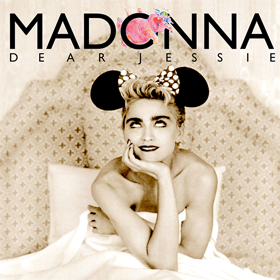
"Dear Jessie" is a song by American singer Madonna from her fourth studio album Like a Prayer (1989). It was released as the fifth single from the album on December 4, 1989, by Sire Records. Written and produced by Madonna and Patrick Leonard, the song was inspired by Leonard's daughter Jessie. The release of "Dear Jessie" was limited to the United Kingdom, certain other European countries, Australia and Japan. The track is composed more like a children's lullaby rather than a pop song, and features strings, synthesizer and strummed acoustics. A change in tempo occurs during the breakdown, where instrumentation from trumpets is included. Lyrically, the song evokes a psychedelic fantasy landscape, in which pink elephants roam with dancing moons and mermaids.

25 O'Clock is the debut record by English rock band the Dukes of Stratosphear and the eighth studio album by XTC, released on April Fools Day 1985 through Virgin Records. It was publicised as a long-lost collection of recordings by a late 1960s group, but actually consisted of new tracks recorded by Andy Partridge, Colin Moulding, and Dave Gregory of XTC with Gregory's brother Ian.

Nickolas Laurien, known professionally as Nick Nicely, is an English singer-songwriter who records psychedelic and electronic music. He is best known for his 1982 single "Hilly Fields (1892)". Nicely released only one other record in the early 1980s, the single "D.C.T. Dreams", before retreating from the music industry. The influence of "Hilly Fields" has been noted on Bevis Frond, Robyn Hitchcock, Robert Wyatt, and XTC's psychedelic alter egos the Dukes of Stratosphear, as well as the hypnagogic pop movement of the 2000s.

Fire Escape in the Sky: The Godlike Genius of Scott Walker is a compilation album of material by singer Scott Walker, compiled by musician Julian Cope and released by independent Zoo Records in August 1981. The material on the album was drawn from Walker's orchestral pop solo albums released between 1967–70, and focuses on songs that the singer had written himself. After Walker's popularity declined in the 1970s and his albums became out-of-print, Cope conceived the album to rescue Walker from obscurity and present his material to a new audience. Whereas he had previously appealed to middle-of-the-road fans, the compilation was created to help promote Walker to a post-punk audience.

Pebbles is an extensive series of compilation albums in both LP and CD formats that have been issued on several record labels, though mostly by AIP. Together with the companion Highs in the Mid-Sixties series, the Pebbles series made available over 800 obscure, mostly American "Original Punk Rock" songs recorded in the mid-1960s — primarily known today as the garage rock and psychedelic rock genres — that were previously known only to a handful of collectors. In 2007, the release of the Pebbles, Volume 11: Northern California CD marked the final album in the Pebbles series. The following year, Bomp! marked the 30th anniversary of the original Pebbles album with a spartan, limited-edition, clear-vinyl reissue complete with the original pink cover insert.
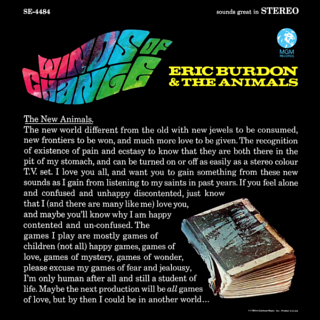
Winds of Change is the debut album by British-American band Eric Burdon & the Animals, released in October 1967 by MGM Records. The album was recorded following the 1966 dissolution of the original group the Animals and singer Eric Burdon's move to San Francisco, where he and drummer Barry Jenkins formed the new Animals lineup with musicians Vic Briggs, Danny McCulloch and John Weider. The album was produced by Tom Wilson and arranged by Briggs in sessions that spanned several months.

"C'mon"/"Jo-Anna Says" is a double A-side single released by Swedish musician Per Gessle as the first single from his Son of a Plumber album. Issued on 4 November 2005, the single was a top five hit on the Swedish Singles Chart, and was one of the best-selling singles of the year in the country. "C'mon" is a glam rock song, while music journalists compared "Jo-Anna Says" to the psychedelic pop work of The Beatles. The artwork for the cover was shot by Anton Corbijn.

The Dukes of Stratosphear were an English rock band formed in 1984 by Andy Partridge, Colin Moulding, Dave Gregory, and Ian Gregory. Modelled after psychedelic pop groups from the 1960s, the Dukes were initially publicised by Virgin Records as a mysterious new act, but were actually an XTC spin-off band. They recorded only two albums: 25 O'Clock (1985) and Psonic Psunspot (1987). In the UK, the records outsold XTC's The Big Express (1984).

Mirror is the fourth studio album by English experimental space rock band Flying Saucer Attack, released by FSA Records and Drag City on 17 January 2000. Lead member David Pearce recorded the album, his second solo project released with the Flying Saucer Attack name, with the assistance of one-time collaborator and English producer Rocker from 1997 to 1999 during a long period of depression. The album builds upon the sampling and noise approaches of the band's previous album, New Lands (1997), exploring electronic experimentation with influences from drum and bass and industrial music, in addition to the lo-fi noise pop and gentle psychedelic folk that he originally established the band's style with.

The Poison Boyfriend is the second album by Scottish musician Momus, released in 1987 on Creation Records. After the critical success of Momus' Biblical-themed and stripped down debut album Circus Maximus (1986), Momus left él Records and signed with Creation Records after he bonded with record label boss Alan McGee. His first release for the label, The Poison Boyfriend is a song cycle that features a full band; its first half features acoustic-based singer-songwriter songs with cabaret pop influences, while the more upbeat second half features synthesisers and drum machines.
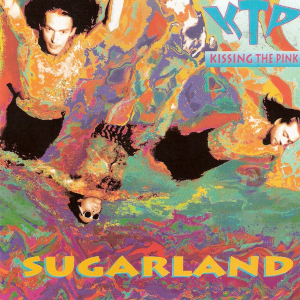
Sugarland is the fourth studio album by English band Kissing the Pink, released in 1993 by SPV GmbH, and was their first album in seven years following 1986's Certain Things Are Likely. The album was a blend of psychedelic music and dance-pop, and it features a remix of their song "Big Man Restless" which was originally released on their debut album, Naked, 10 years prior.
"The Other End (Of the Telescope)" is a song by American band 'Til Tuesday, which was released in 1988 on their third and final studio album Everything's Different Now. The song was written by Aimee Mann and Elvis Costello. Costello recorded his own version of the song for his 1996 album All This Useless Beauty.


















